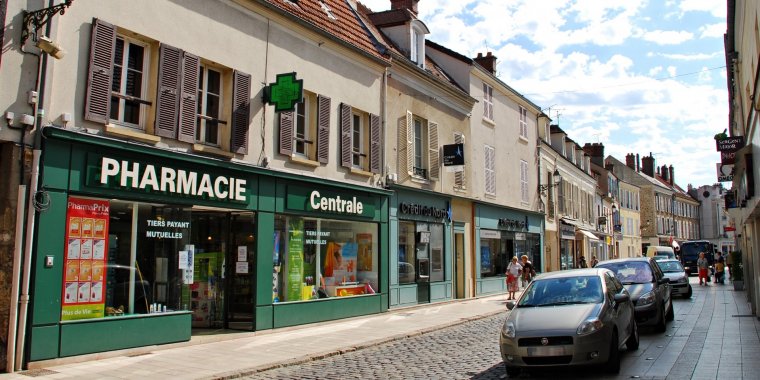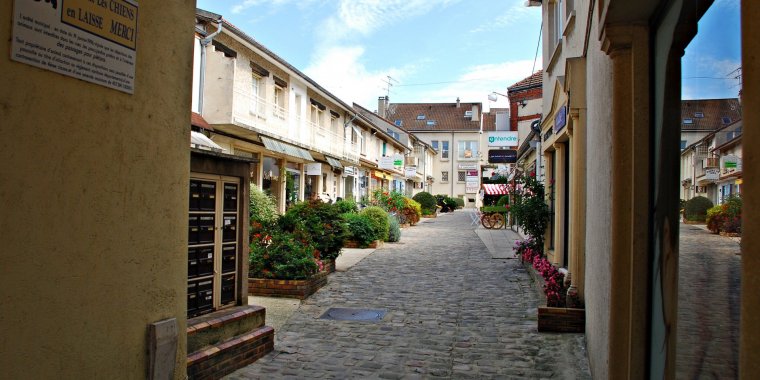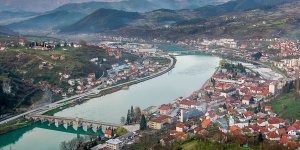| Published in Destinations |
Rambouillet, France

Rambouillet, France. Photo: Cătălin Kislinger / Titi Tudorancea Bulletin
Rambouillet is a commune in the Yvelines department in the Île-de-France in north-central France. It is located on the outskirts of Paris, 44.3 km (27.5 mi) southwest from the centre.
Rambouillet lies on the edge of the vast Forest of Rambouillet (Forêt de Rambouillet or Forêt de l'Yveline), and is famous for its historical castle, the Château de Rambouillet, which hosted several international summits. Due to its proximity to Paris and Versailles, Rambouillet has long been an occasional seat of government.
Features
• The Château de Rambouillet, a former medieval fortress, was acquired by Louis XVI of France in 1783 as a private residence because of its ideal situation in the game-rich forest of Rambouillet. It became a bien national during the French Revolution of 1789, and one of the imperial residences of Napoléon I during the First French Empire. At the time of the Bourbon Restoration, the castle became royal residence, and it is there that Charles X signed his abdication on 2 August 1830.
Sometimes neglected at times of political unrest, the château de Rambouillet became the official summer residence of the French President of the Republic after President Félix Faure chose it as summer residence for himself and his family in 1896; Rambouillet thus became the official summer residence of the Presidents of the Third Republic and has retained its position ever since.
• The Palais du Roi de Rome. In 1784, on a parcel adjacent to the gardens of the castle, Louis XVI had ordered the construction of the Hôtel du Gouvernement, which was restored during the reign of Napoléon I, and renamed Palais du Roi de Rome as the official Rambouillet residence of Napoleon's infant son. Its entrance is situated in the rue Charles de Gaulle, Rambouillet's main street.
• The Hôtel de Ville, the former Bailliage (Bailiwicks building) was built in 1786 at the request of Louis XVI by the architect Jacques-Jean Thévenin. It was given by Napoléon I to the inhabitants of Rambouillet to serve as their City Hall.
• The new Saint-Lubin church was built between 1868 and 1871. Its architect was Anatole de Baudot, a student of Eugène Viollet-le-Duc.
• The Bergerie nationale was built on the grounds of the Domain of Rambouillet at the request of Louis XVI, and is the home of the Rambouillet Merino sheep since 1786.
• The Laiterie de la Reine, the Queen's Dairy also built on the grounds of the Domain of Rambouillet, is adjacent to the Bergerie. It was built in 1787 at the request of Louis XVI for his wife Marie Antoinette and designed by the architect Jean-Jacques Thévenin.
• The Chaumière des coquillages, a thatched-roof cottage with its marble interior decorated with shells and mother of pearl, was built in 1779-1780 in the English garden of the Domain of Rambouillet by Claude-Martin Goupy, the architect of the duc de Penthièvre, for the princesse de Lamballe, Penthièvre's widowed daughter-in-law.
• The Musée Rambolitrain, situated across from the Saint-Lubin church, is a museum featuring miniature trains. We find the a faithful reconstruction of a Parisian toy store of the 1930s.
• The Monument Américain (The American Eagle Monument), is situated at the south entrance of the town on the D 906 road to Chartres, at the site of two ambushes in which seven American soldiers were killed, on 16 August 1944. The monument was erected in 1947.
Climate
The climate in Rambouillet is a temperate climate of oceanic type degraded characteristic of that of the Île-de-France. Average temperatures range from 2 to 5 ° C in winter (January) and 14 to 25° C in summer (July). The relatively low average rainfall is about 600 mm per year. The rainiest months go from October to January. See: Rambouillet Weather Forecast
Transport and communication
The town is served by:
• The national road 10, which avoids the city center thanks to a deviation passing to the east, is oriented: north-east towards Saint-Quentin-en-Yvelines, Versailles and Paris. It allows communication to the A12, A13 and A86 motorways, but also to the departmental road 191 towards Mantes-la-Jolie. Facing south-west towards Chartres, it allows communication to the A10 and A11 motorways in the sector of Ablis;
• The departmental road 906, connects Rambouillet to the valley of Chevreuse towards the east and Maintenon (valley of the Eure) towards the west;
• The departmental road 936 which connects Rambouillet to Houdan to the northwest and to Saint-Arnoult-en-Yvelines and Dourdan to the south-east;
• Other departmental and communal roads allow to connect it to the neighboring communes (RD 150, RD 151, RD 937, RD 27).
Railway services
On the railway side, it has a station served by the Transilien Paris-Montparnasse and TER-Loire networks on the Paris-Montparnasse train station in Chartres. The semi-direct Paris-Montparnasse-Rambouillet lasts between 28 and 35 minutes (28 round trips per day). The 42 daily omnibus trains take between 50 and 65 minutes. It is served by:
• On the N Line of the Transilien:
A train every quarter hour at rush hour, a train every half hour at off-peak hours and on Sunday, and a train every hour in the evening.
• On the TER Center-Val de Loire:
Four trains per hour (approximately every quarter hour) in rush hour and one to two trains per hour the rest of the time.
Bus
The municipality is served by the lines A, B, C, A, B, C, A, B, C, D and E of the Rbus bus network, on lines 39.003, 39.203 and 39.303 of the transport company SAVAC and on line 82 of the Transbeauce network.

Rambouillet, France. Photo: Cătălin Kislinger / Titi Tudorancea Bulletin.
Sources:
• en.wikipedia.org
• fr.wikipedia.org
YOU MAY ALSO LIKE






 If you own or manage a travel-related business such as a hotel, a bed-and-breakfast, a restaurant, a pub or a cafeteria, you can create a web page for your business for free on Titi Tudorancea Travel Info. » |